Last Updated on July 8, 2025 by Maged kamel
Arithmetic Gradient-part 2 in the Economy.
Arithmetic Gradient-part 2-Solved problem 4-8 how to find P, with given I%,n, G?
In the Arithmetic Gradient-part 2, we will discuss a solved problem 4-8.
A man has purchased a new automobile. He wishes to set aside enough money in a bank account to pay the maintenance on the car for the first 5 years.
It has been estimated that the maintenance is as follows For year- 1 the maintenance cost = is $120, year- 2 the maintenance cost is $150, year- 3 the maintenance cost is $180, year- 4 the maintenance cost is $210, and for year- 5 the maintenance cost =$240.
Assume the maintenance costs occur at the end of each year and that the bank pays 5% interest.
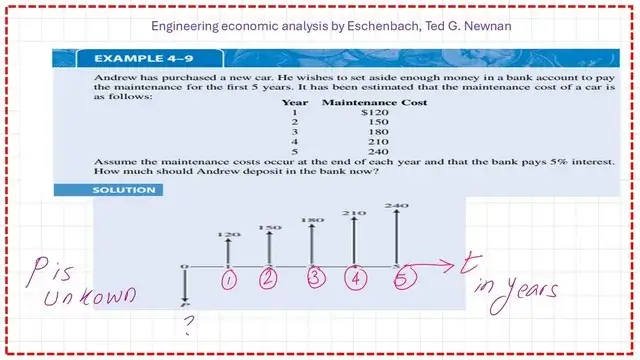
How much should the car owner deposit in the bank now?
Solution: In the Arithmetic Gradient-part 2. A-The man deposits P at year 0, to repay unequal values of maintenance at the end of each year. We draw the timeline diagram, at t=1, we have a value of $120 and at t=2, we have a value of $150 at t=3.
We have a value of $180, at t=4, we have a value of $210, at t=5, we have a value of $240, The shape of a trapezium is created.
B-We check whether the G has a constant value by subtracting the value at t=1 from t=2, which is 150-120=$30, which is the same value obtained by subtracting the value at t2 from t3, which is 180-150=$30.
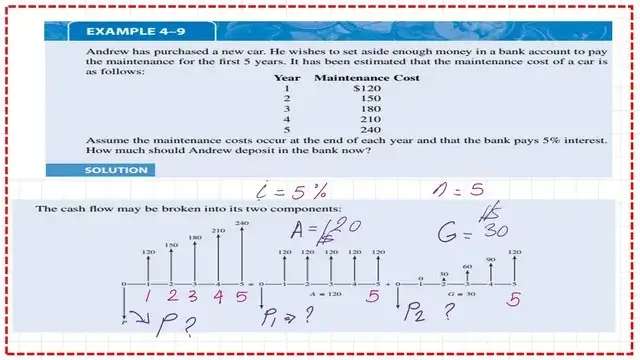
Arithmetic Gradient-part 2- G value for the deposit.
This is the same value obtained by subtracting the value at t3 from t4, which is 210-180=$30, and the same value is obtained by subtracting the value at t3 from t4, which is 240-210=$30. This is called the G value.
We will consider the trapezium shape as consisting of two shapes, the first shape is rectangular starts at t=1, and ends at t=5, where i=5% and n=5 years, and the second shape is the shape of a triangle that starts at t=1 and ends at t=5.
The value at t=1 is 0, and the value at t=5=$120, the $120 represents the difference between 240-120=$120.
For the first shape, the value of A is $120 as a constant value. Our G value is $30.
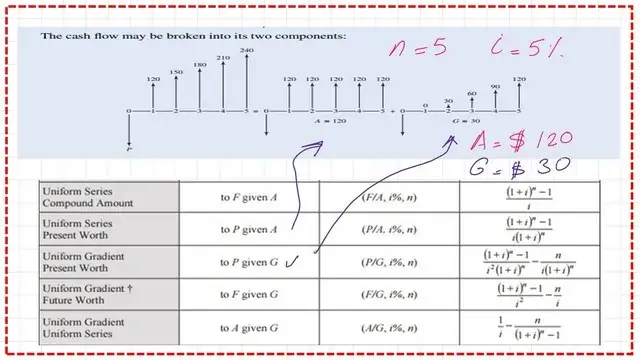
The present value P needs to be estimated, which is a sum of P1 due to uniform series with the known values of A, I%, and n, Plus P2 due to arithmetic gradient with the known values of G, I%, and n.
Arithmetic Gradient-part 2-Estimate P/A and P/G values by using formulae.
A/P=(I%)*(1+i%)^n/(1+i%)^n -1)(0.05)*(1+0.05)^5/(1.05)^5-1, we have i5=5%,n=5 years, substitute in the formula we can get the value of A/P which is equal to 0.2309.
For the value of P/A, it is the reciprocal of A/P which will be =1/0.2309=4.329. For the P/G value, we have the relation, (P/G)=((1+i)^n-i*n-1))/(i^2*(1+i)^n)). If we want to estimate the values of P/G, by the relations, we find P/G we substitute in the shown equation as presented in the slide image.
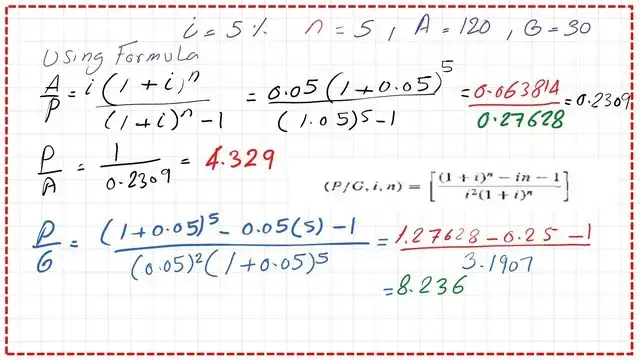
We can estimate the final P-value as the sum of P1 and P2 these values are shown in the slide image.
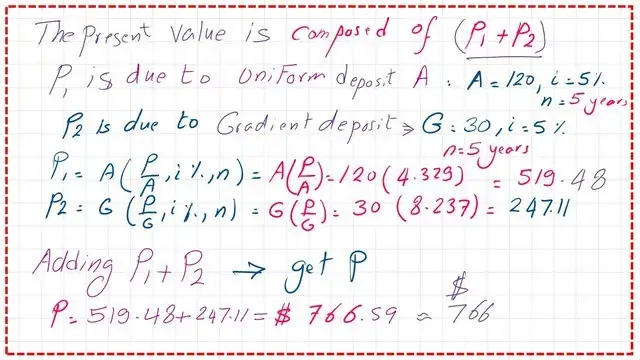
We get the P/A value and under the column of gradient present worth, find P given G, which is 8.237. P1=120*4.329. For the value of P2, we have P2=30*(8.237).
To get the present value of the money to be deposited in the bank we will sum P1 and P2 as follows: P=P1+P2=519+247.11=$766.
Arithmetic Gradient-part 2-Estimate P/A and P/G values by using table.
We use the table of I=5%, for the compound amount factors, check the known data, which is the number of years n=5 and we need to estimate the P/A for the first shape and P/G for the second shape. We move horizontally to the left and under the column of present worth factor, find P with the given A.
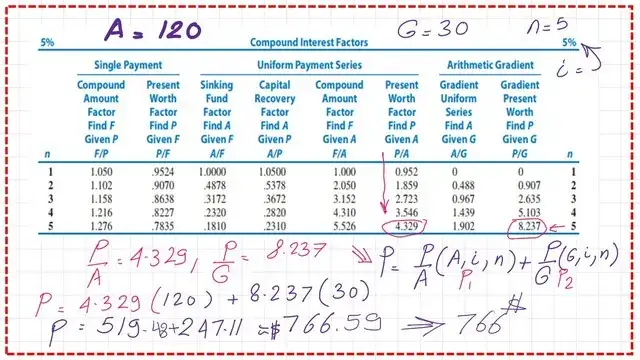
P/G is shown by using the table to be =8.236. We will obtain the final value of p as the sum of the two values of P1 and P2. The final result matches the previous estimations done by substitutions.
Can we use an excel built in function for the relation between P and G?Please refer to the next slide image for details?
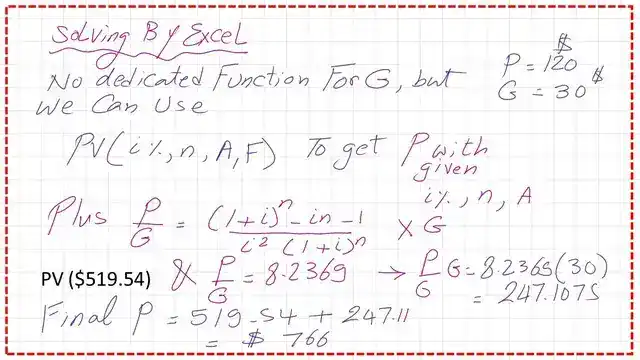
External resource in Engineering Economy. This is a great link that illustrates different types of economies, how to make economic decisions. the time value of money, A good referance
The next post will be about Types of assets.